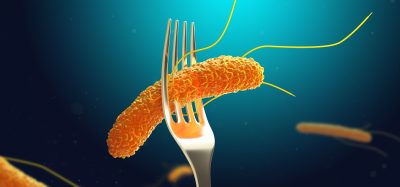The cure for a sweet tooth? Scientists study food preferences
- Like
- Digg
- Del
- Tumblr
- VKontakte
- Buffer
- Love This
- Odnoklassniki
- Meneame
- Blogger
- Amazon
- Yahoo Mail
- Gmail
- AOL
- Newsvine
- HackerNews
- Evernote
- MySpace
- Mail.ru
- Viadeo
- Line
- Comments
- Yummly
- SMS
- Viber
- Telegram
- Subscribe
- Skype
- Facebook Messenger
- Kakao
- LiveJournal
- Yammer
- Edgar
- Fintel
- Mix
- Instapaper
- Copy Link
Posted: 6 November 2020 | Joshua Minchin (New Food) | No comments yet
Neuroscientists think they might be able to change the way the brain chooses food and other rewards – which aside from transforming the popularity of vegetables could pave the way for enhanced addiction therapy.


Researchers hope that the study will help them understand how the brain chooses food.
Researchers in the USA have published a paper which could begin a wider study into what fuels certain food choices – and even more importantly, devise therapies for addictions.
Scientists from John Hopkins University in Baltimore and the University of Minnesota have discovered that activity in a specific brain region, known as the ventral pallidum, is central to preferences when it comes to food and drink.
By observing rats, the team were able to show that this area of the brain constantly updates preferences as physiological status changes, for example from thirsty to quenched.1
“Your brain has to weigh different possible outcomes or options in order to make good decisions that are necessary for survival,” said Patricia Janak, the study’s senior author and Bloomberg Distinguished Professor of Psychological and Brain Sciences and Neuroscience at John Hopkins. “We knew the ventral pallidum is involved in that process. Exactly how the neurons there do that was still a bit of a mystery, especially in real-time when the best decision for you to make right now can change based on your state.”2
The team used rats to demonstrate how neurons in the ventral pallidum reacted as their food preferences shifted. The rats were given the option of normal water, or a well-liked sucrose-infused water.
“We saw that the neural activity when tasting the sucrose gradually increased over time while the neural activity when tasting the water decreased, which gave us evidence that the brain signal is closely related to the change in preference as the subjects became less thirsty and were less interested in the water,” said lead author, David Ottenheimer.2
That the brain would opt for something sweet after feeling full is perhaps not overly surprising; many reach for the chocolate after a substantial meal. But it’s what the researchers did next which could change how things like drug addiction are treated going forward.
The team were able to artificially manipulate the neurons in the ventral pallidum, changing the rats’ preference form the sugar water to a less tasty flavour.
“We hypothesise that the ventral pallidum neurons that are tracking our preferences may actually be involved in forming the choices we make when faced with food decisions,” Ottenheimer explained. “In the future, ventral pallidum may be a good therapeutic target to change our decision-making processes.”2
“These same circuits are responsible for choices made in addiction,” Janak added. “So, the knowledge we gain here can help in understanding how we prioritise drugs over other rewards.”2
This area of research is still in its infancy, but manipulation of the ventral pallidum could keep chocolate in the fridge and even lead to life-changing therapies for those suffering with drug addiction.
References
1. https://advances.sciencemag.org/content/6/45/eabc9321
2. https://releases.jhu.edu/2020/11/04/brain-region-tracking-food-preferences-could-steer-our-food-choices/






